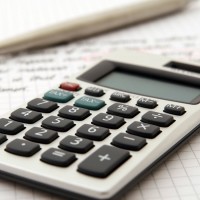There are a small number of changes to Personal and Corporate Tax.
Personal Tax Rates and Allowances
No future changes to tax rates and the main personal allowances were announced, the Chancellor presumably waiting until the new Autumn Budget later in the year.
The personal allowance will increase on 5th April from the current £11,000 to £11,500. This allowance will continue to fall by £1 for every £2 by which adjusted net income exceeds £100,000.
Married Couples Allowance for people born before 6th April 1935 will increase from £8,355 to £8,445. This allowance falls by £1 for every £2 by which adjusted net income exceeds £28,000.
The Transferable Tax Allowance (“Married Allowance”) remains at 10% of the personal allowance.
Tax rates remain at 20% for basic rate taxpayers and 40% for higher rate taxpayers. The higher rate will apply to taxable income above £33,500 compared to £32,000 currently. Taxable income above £150,000 will continue to be taxed at 45%.
Savings and Investment Income
The tax-free dividend allowance, currently at £5,000, will be reduced to £2,000 from 5th April 2018.
The Nil Rate band for savings income remains at £1,000.
The already announced Trading and Property Income Allowances will be introduced. These will allow £1,000 to be deducted from both trading income and property income instead of actual expenses incurred.
From 6th April 2017 any taxpayer aged under 40 can open a Lifetime Individual Savings Account (“ISA”). Savings can be made up to £4,000 each until they reach the age of 50 and a 25% bonus will be received from the government. Subject to restrictions, these must be used to purchase a first home valued at below £450,000 or for retirement.
As previously announced a new NS&I Investment Bond will be introduced. On savings between £100 and £3,000 the bond will offer 2.2% over a three year term.
Corporation Tax Rates
It was announced that the future reduction of Corporation Tax to 15% would be scrapped. However, the previously announced reductions in the rates of Corporation Tax from the current rate of 20% will take place as follows:
- 1st April 2017 – 31st March 2018 19%
- 1st April 2018 – 31st March 2019 19%
- 1st April 2019 – 31st March 2020 19%
- 1st April 2020 – 31st March 2021 17%
Value Added Tax
There is no change to the rate of VAT.
From 1st April 2017 the VAT registration limit is increased to £85,000 and the deregistration limit is increased to £83,000.
As previously announced, a new rate under the Flat Rate Scheme of 16.5% will be introduced. The new rate will apply to any business defined as a limited cost trader. A limited cost trader is essentially someone whose VAT inclusive inputs are less than the higher of £1,000 per annum or 2% of VAT inclusive turnover.

